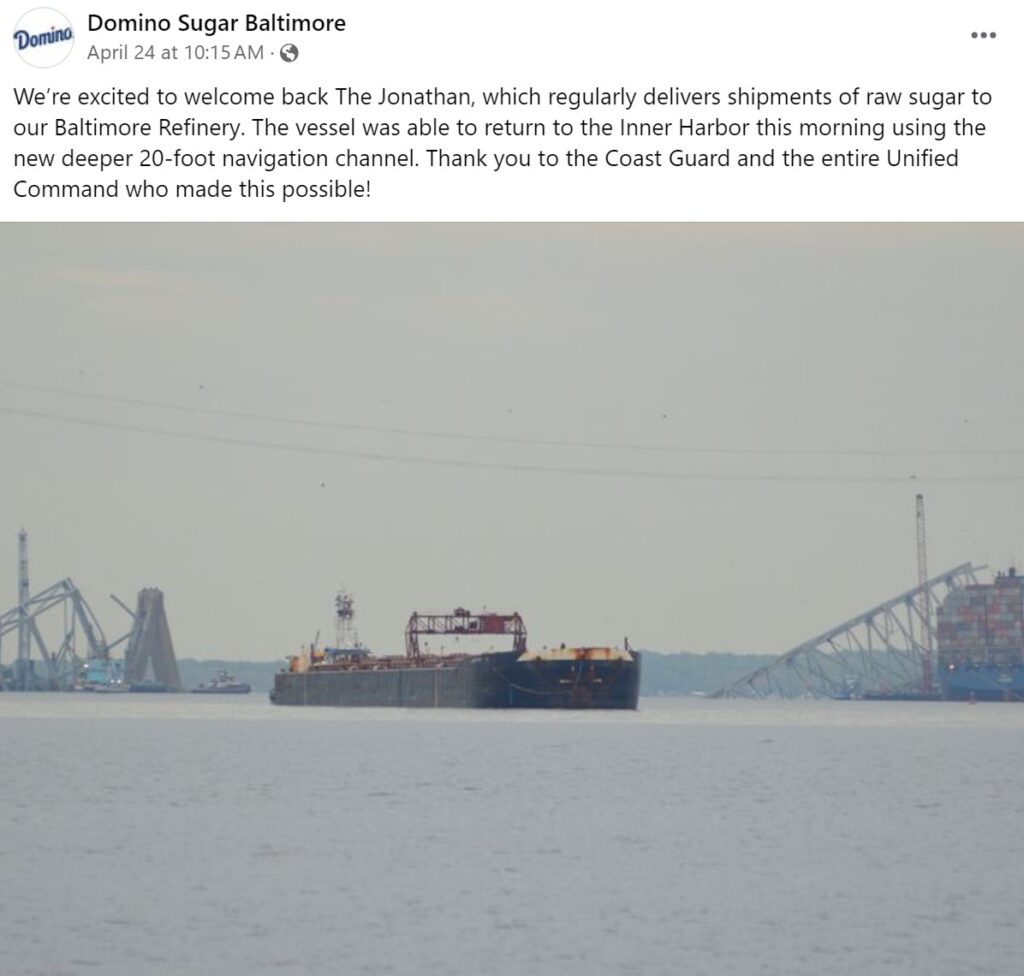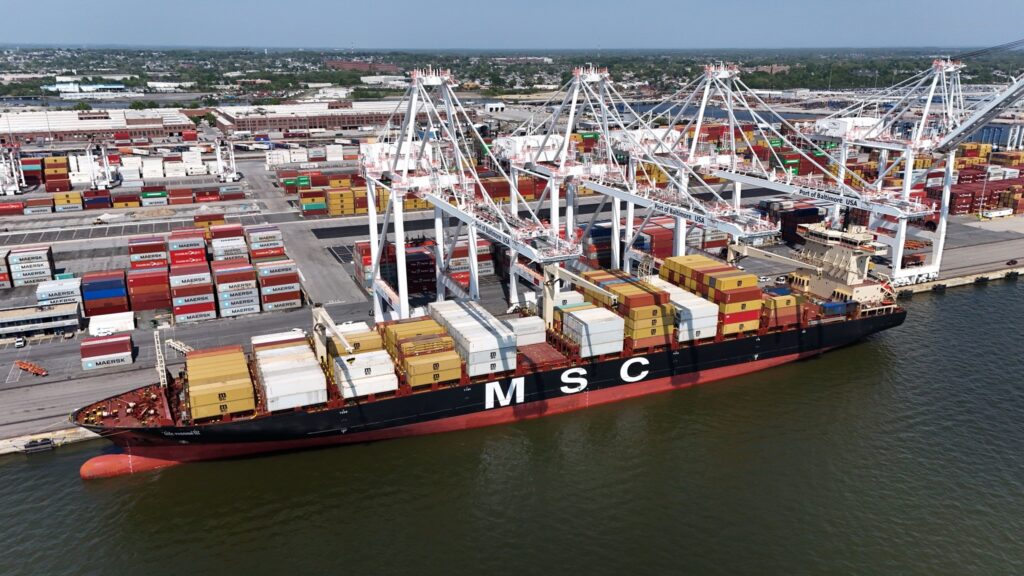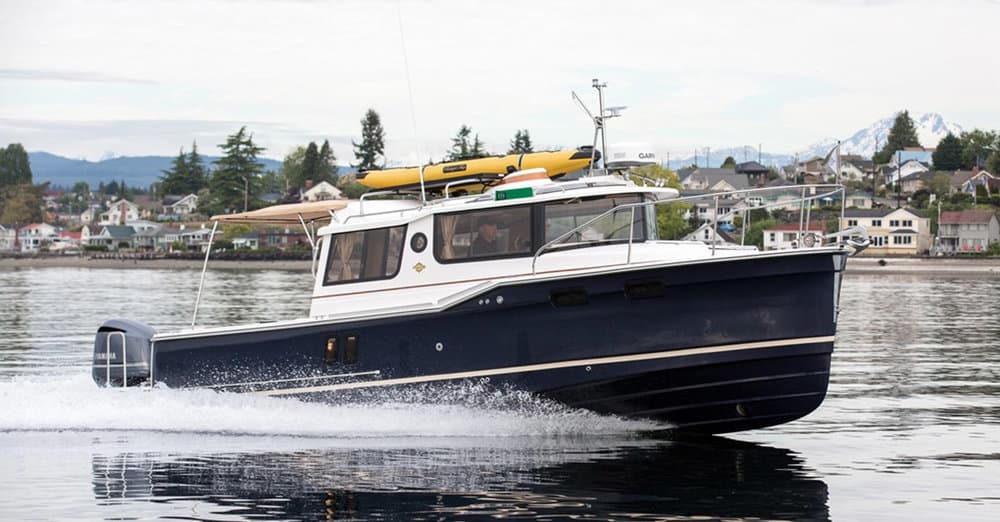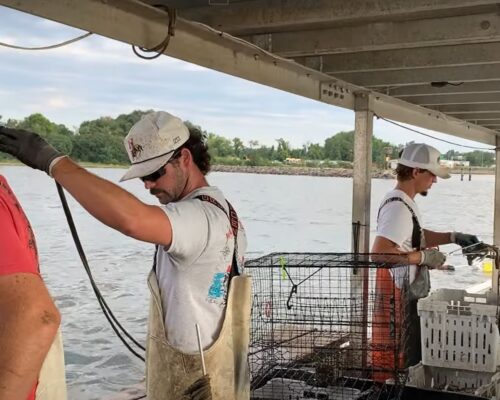At the one-month mark of the Key Bridge collapse, a stunning amount of progress has been made to clear the wreckage and allow safe passage up the Patapsco River to Baltimore.
And crews are getting closer all the time to restoring the full, 700-foot-wide, 50-foot-deep shipping channel. In fact, the Port of Baltimore just announced a limited access channel with a depth of 45 feet will be open by May 10. That’s 10 feet deeper than any temporary channel that has opened thus far.
But reaching this point has taken feats of strength by the most powerful machinery available and crew members working day and night. By the numbers, Key Bridge Response Unified Command says:
- 50,000 tons of wreckage needed to be removed from the Key Bridge site.
- 3,000 tons have been removed so far.
- 36 barges, 27 tugboats, 22 floating cranes, 10 excavators, one dredger, one skimmer, and three Coast Guard cutters are being used to deal with the wreckage.
- More than 250 uniformed and civilian workers from 53 agencies from across the U.S. are deployed to Baltimore for recovery and salvage efforts—plus 553 contractors handling dive, crane and vessel operations.
- 90 dive missions have been conducted by seven dive teams, not including the 60 hard-working divers who searched for the eight victims of the bridge tragedy in those first two days following the ship strike.
- 171 commercial vessels have been able to use the four alternate channels that have been open at various times. Five of those had been waiting to leave the Port of Baltimore since March 26.
The Port of Baltimore has been extremely limited in its ability to operate since the bridge collapsed. But this past weekend brought some hope. From April 25-29, a Limited Access Channel opened to shipping traffic that draws 35 feet or less. While the largest ships that usually call at the Port of Baltimore will have to wait until the full, permanent channel is opened, ships that had been waiting a month to travel the channel were able to do so.
The Port shared that the first container ship to arrive at Seagirt Terminal was the MSC Mediterranean Shipping Co Passion III, which used the 35-foot-deep channel over the weekend. Nearly 1,000 containers were handled by about 80 longshoremen, the Port said.
And South Baltimore’s Domino Sugar was excited to announce its raw sugar-carrying ships have been able to return using the temporary channels that have opened. The company shared this update on social media, so that we can stop worrying about the threat of a sugar shortage:

The just-announced, 45-foot-deep channel is currently set to open “on or about” May 10. Between now and then, salvage crews will work toward getting the M/V Dali moved. Before that can happen, 180 containers needed to be unloaded from the ship and a portion of the bridge removed from the bow of the ship. As of Friday 137 had already been removed.
Once the Dali is removed, the new channel will be open to “commercially essential vessels” from 8 p.m. to 7 a.m. Deep-draft vessels using this channel must use a Maryland Pilot and a two tug escort. They will have to travel at “the slowest safe speed, but not to exceed 10 knots,” the U.S. Coast Guard Captain of the Port stipulates. Boats that don’t require the deeper channel should use the other three temporary channels, at 20, 14 and 11 feet deep, which will remain open.
For the rest of the salvage operations, a Minimum Wake Speed Limit Zone has been established to protect crews and their efforts.
The U.S. Army Corps of Engineers says they are still on track to reopen the Port of Baltimore’s permanent channel by the end of May.




